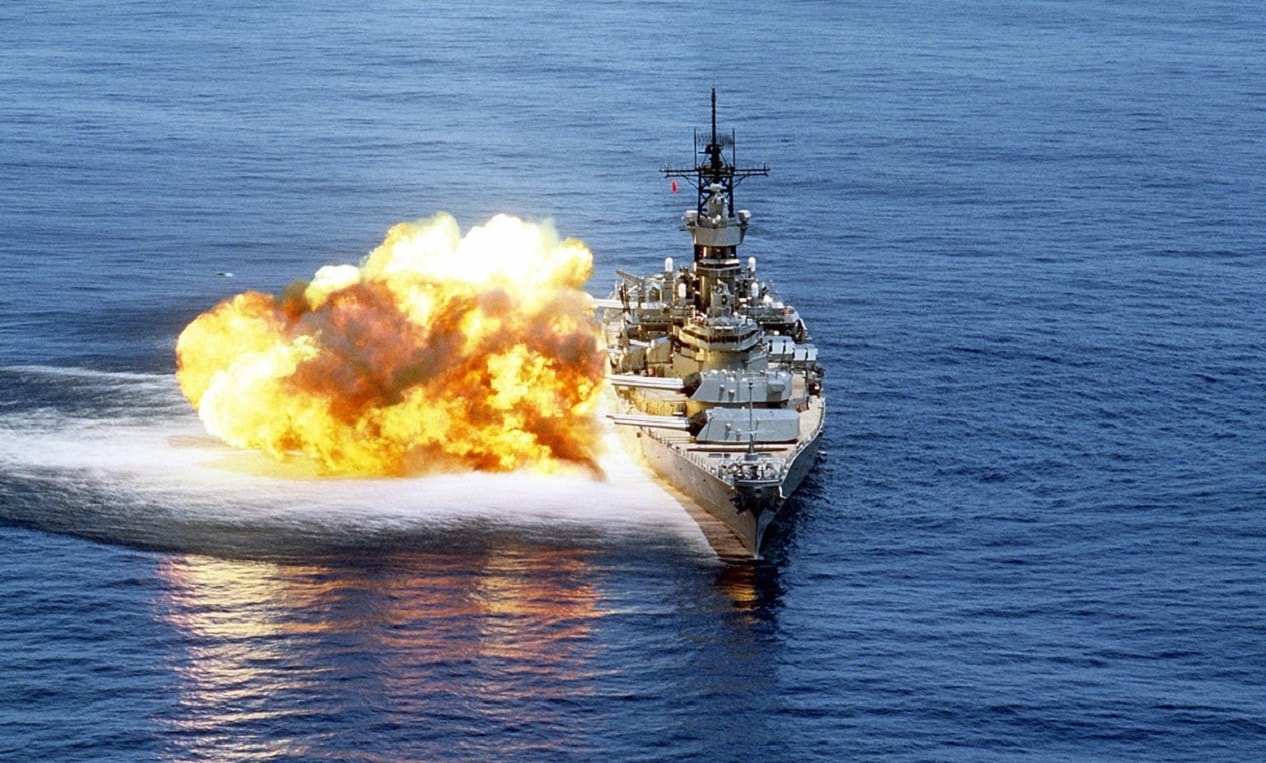The Iowa-class Aircraft Carrier – It Almost Happened Twice: During the Second World War, construction was halted on the final two of the planned six Iowa-class battleships for the U.S. Navy. As the Iowa-class were the only battleships with the speed required to keep up with an aircraft carrier strike group, a plan was considered whereby the unfinished USS Illinois and USS Kentucky would be completed with flight decks and an armament suite similar to that of the U.S. Navy’s Essex-class aircraft carriers.
The idea wasn’t really as crazy as it sounds. Due to restrictions imposed by the Washington Naval Conference after the end of the First World War, the U.S. Navy and the Imperial Japanese Navy were each forced to cancel their respective battlecruiser programs – but each was allowed to convert two of those fast warships into aircraft carriers.
The redesign process, constrained by the already completed construction, nonetheless produced for both countries two useful – if not optimal – ships.
During the Second World War, the Japanese also converted the third Yamato-class battleship, Shinano, to a carrier. At 65,800 tons, she was the largest aircraft carrier built during the war and was even larger than the U.S. Navy’s Cold War era Kitty Hawk-class. In fact, it wasn’t until the arrival of the USS Enterprise (CVN-65) in 1958 that a larger carrier was built.
The U.S. Navy didn’t actually move forward with the plans to convert the Illinois or Kentucky – yet it did order that nine of the Cleveland-class cruisers were converted to light aircraft carriers, becoming the Independence-class, while under construction during the Second World War.
The Cold War Battleship Carrier
That might have been the end of the story, but during the Cold War the Soviet Navy introduced its Kiev-class (Project 1143 Krechyet) hybrid battlecruiser/fixed-wing carrier. It was partially based on the full-deck carrier proposed as part of the Soviet’s Project Orel, which called for the completion of a supercarrier in class with the design to the U.S. Navy’s Kitty Hawk-class.
Its designation as a heavy aviation cruiser allowed it to transit the Turkish Straits, despite the 1936 Montreux Convention’s regulations against aircraft carriers heavier than 15,000 tons from passing through the waterway.
A new proposal was floated that called for converting an Iowa-class battleship to a carrier by removing the aft turret and adding a flight deck, which could launch and recover short take-off and vertical landing (STOVL) – notably the AV-8B Harrier. According to the plan up to 20 of the aircraft could be carried on the ship.
A program manager at Martin Marietta, which helped develop the concept, offered some thoughts on the program and suggested it “could carry an effective anti-air warfare suite, a contingent of airmobile marines, vertical missile launchers and long-range missiles, and six 16-inch guns forward. Thus configured, the IAS would become an excellent crisis control ship—an integral military part of a new foreign policy able to deal out flexible responses matched to the strategic and tactical situation. Ordered into a trouble area, the IAS would create an awesome, meaningful presence. Asked to initiate a naval blockade, the IAS could engage any challengers with an incredible array of options—ranging from her simple presence, to the ominous slewing of her massive guns toward the object of her interest, to clearing off the intruder’s bow with the sweep of a ten-ton salvo, to boarding the trespasser with airborne marines, to destroying an enemy with gunfire or missiles.”
While all four of the Iowa-class battleships were returned to service in the 1980s during the Reagan administration, by the end of the decade the Cold War was all but over. All four of the battlewagons were retired again – and likely permanently – yet supporters of the conversion lobbied for it well into the mid-1990s. Perhaps it is best that the vessels are now museums and not half-baked or even half-assed carriers.
Peter Suciu is a Michigan-based writer who has contributed to more than four dozen magazines, newspapers, and websites. He regularly writes about military small arms, and is the author of several books on military headgear including A Gallery of Military Headdress, which is available on Amazon.com. Peter is a Forbes Magazine Contributing Writer.

